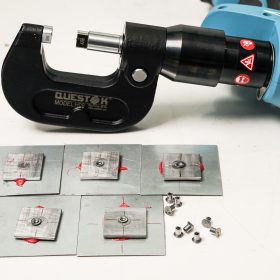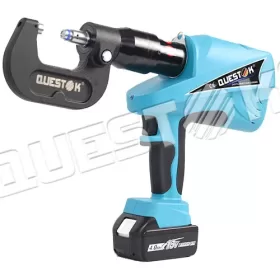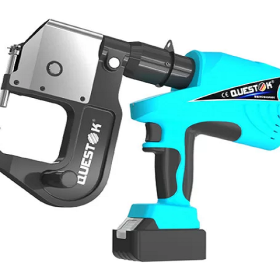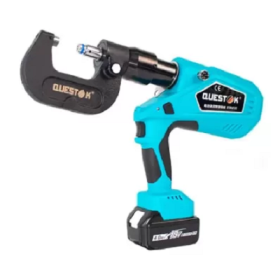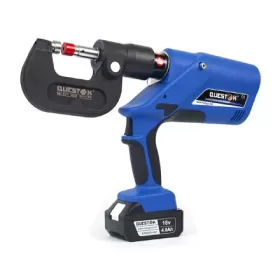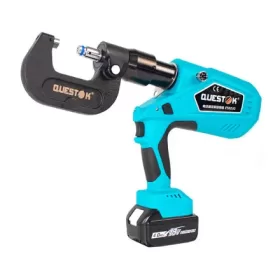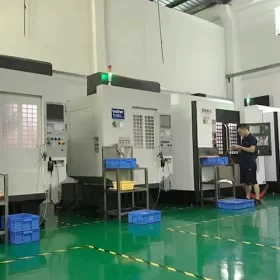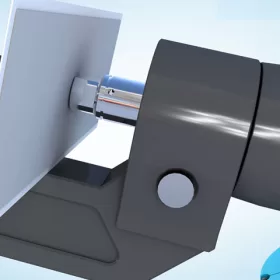Self-Piercing Rivet Guns vs. Traditional Riveting Methods- A Comparison
Introduction
In the world of industrial fastening, riveting stands as a crucial technique for joining sheet metal components. Traditionally, riveting has been carried out using specialized tools like riveting hammers or presses, which require holes to be pre-drilled in the metal sheets. However, the advent of self-piercing rivet guns has revolutionized the riveting process, offering significant advantages over conventional methods. This article aims to present a comprehensive comparison between self-piercing rivet guns and traditional riveting methods, highlighting their distinct characteristics and applications.
Accessibility and Flexibility
One key advantage of self-piercing rivet guns lies in their accessibility. Traditional riveting methods require access to both sides of the metal sheets, as a backing anvil is typically used to support the rivet from the opposite side. In contrast, self-piercing rivet guns are designed to pierce through the metal sheets and form the rivet in one operation, eliminating the need for backing anvils. This allows for riveting in difficult-to-reach areas or complex geometries where traditional methods may prove impractical.
Speed and Efficiency
Self-piercing rivet guns offer greater speed and efficiency compared to traditional methods. By eliminating the need for pre-drilled holes, self-piercing rivet guns significantly reduce the time required for riveting. Moreover, their ability to pierce and form rivets in a single step further enhances the overall riveting process efficiency. This translates into increased productivity and reduced labor costs for manufacturing operations.
Material Compatibility
Self-piercing rivet guns are compatible with a wide range of metal materials, including steel, aluminum, and stainless steel. Their ability to pierce through the metal sheets without pre-drilling makes them suitable for use with thinner and more delicate materials, where traditional riveting methods may cause distortion or damage. This versatility allows for a wider range of applications and ensures a more precise riveting process.
Strength and Durability
Self-piercing rivets are known for their high shear and tensile strength, comparable to or even exceeding that of conventional rivets. The cold-forming process involved in self-piercing riveting creates a strong mechanical bond between the joined metal sheets, ensuring a secure and durable joint. Additionally, self-piercing rivets are less likely to experience loosening or vibration-induced failure, making them a reliable choice for applications demanding structural integrity.
Cost-Effectiveness
The cost-effectiveness of self-piercing rivet guns stems from several factors. Firstly, their reduced labor requirements due to faster riveting speeds and simplified operation lead to lower production costs. Secondly, the elimination of pre-drilled holes minimizes material waste, resulting in savings on materials. Furthermore, the durability of self-piercing rivets extends their lifespan, reducing maintenance and replacement costs over time.
Conclusion
The comparison between self-piercing rivet guns and traditional riveting methods reveals the significant advantages offered by self-piercing technology. Their accessibility, speed, material compatibility, strength, and cost-effectiveness make them a preferred choice for a wide range of riveting applications. While traditional riveting methods remain suitable for certain scenarios, the benefits of self-piercing rivet guns have made them a staple in modern manufacturing processes, particularly for industries that prioritize precision, efficiency, and reliability.
- Company News
- Industry News
- Tag
- Tags
-
The Advantages of Questok Rivet Guns: Precision, Efficiency, and Durability
In industrial fastening applications, the choice of tools directly impacts productivity, safety, and long-term cost-effectiveness. Questok rivet guns have emerged as a standout solution for professionals across aerospace, automotive, and construction sectors. Combining advanced engineering with user-centric design, these tools deliver unmatched performance. Below are the key advantages that make Questok rivet guns a preferred choice:
-
Rivet Gun FAQ
Rivet Gun FAQ-SPR
-
Fast Assembly and Repair With Cordless Solid Rivet Gun
Questok cordless solid rivet gun stands out as a pivotal innovation, merging portability with power to facilitate efficient and effective fastening in a myriad of applications.
-
Redifine The Role of Self-piercing Riveting Gun Machine
Self-piercing riveting adopts high-speed mechanical fastening skill that joins thin sheet materials, typically steel and aluminum alloys.
-
The Latest Innovations in Clinching Tool Design
Explore the latest innovations in clinching tool design, redefining precision, efficiency, and versatility in material joining.
-
The Application and Maintenance of Self-Piercing Rivet Guns
Delve into the applications of self-piercing rivet guns in the automotive and aerospace industries and reveal the essential maintenance practices that ensure their accuracy and efficiency.
-
Rivetless Riveting Gun for Ventilation Duct Projects
The ventilation duct rivetless gun is a tool for riveting ventilation ducts without rivets.
-
Guide to Using Self-Piercing SPR Riveting Gun
In the automotive industry, self-piercing SPR (Self-Piercing Rivet) riveting guns are commonly used for joining metal components in vehicle bodies, including BMW vehicles.
-
Rivet Gun FAQ
Rivet Gun FAQ-SPR
-
Versatile Fastening- Applications of the Handheld Rivet Gun Across Industries
In the realm of fastening, the handheld rivet gun stands as a testament to ingenuity and versatility. Its ability to effortlessly join materials with sheer strength and permanence has revolutionized manufacturing and construction processes, leaving an enduring mark on diverse industries. Aerospace: Where precision and reliability are paramount, the rivet gun shines. In aircraft assembly, […]
-
Time-Saving Tools- Speeding Up Projects with Electric Blind Rivet Guns
In the whirlwind of project deadlines, every minute counts. But what if there was a tool that could dramatically reduce assembly time, giving you an edge in the race against the clock? Enter the electric blind rivet gun: your secret weapon for lightning-fast and effortless riveting. Electric blind rivet guns are the ultimate time-savers for […]
-
Streamlining Fastening- How an Electric Blind Rivet Gun Enhances Efficiency
Introduction In the realm of manufacturing and assembly, fastening plays a crucial role in securing components and ensuring structural integrity. Traditional manual rivet guns, while reliable, are often time-consuming and labor-intensive. The advent of electric blind rivet guns has revolutionized the fastening process, significantly enhancing efficiency and productivity. This article delves into the benefits of […]
-
Top Trends in Electric Rivetless Clinching Guns
In the realm of fastening technology, electric rivetless clinching guns have emerged as a revolutionary solution for a wide range of industrial applications. These advanced tools offer several преимущества and capabilities, revolutionizing the way businesses approach their fastening needs. Adoption of Brushless Motors Brushless motors have gained significant traction in electric rivetless clinching guns due […]
-
Top Features and Benefits of Universal Self-Piercing Riveting Guns
In the realm of metalworking, precision and efficiency are paramount. Universal self-piercing riveting guns, often referred to as self-pierce riveting guns, embody these qualities, offering remarkable benefits for various applications. These innovative tools feature technologically advanced functions that enhance productivity, reliability, and overall performance, making them indispensable in industries such as aerospace, automotive, construction, and […]
-
The Role of Automation in Electric Rivetless Clinching
Electric rivetless clinching (ERC) is a lightweight joining process that eliminates the need for rivets or other fasteners. This can lead to significant cost savings and increased production efficiency. Automation plays a critical role in ERC, enabling high-speed and high-volume production. Automated Feed Systems Automated feed systems are used to accurately position the two workpieces […]
-
Why Choose a Universal Self-Piercing Riveting Gun for Your Projects?
In the realm of construction and fabrication, riveting guns stand as indispensable tools for creating secure and robust connections. Among the various types available, universal self-piercing riveting (SPR) guns have emerged as a game-changer due to their versatility and efficiency. This article will delve into the compelling reasons why choosing a universal self-piercing riveting gun […]
